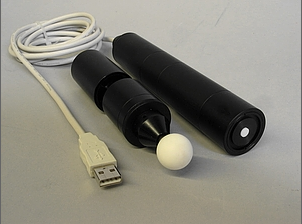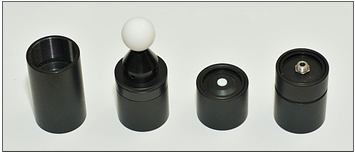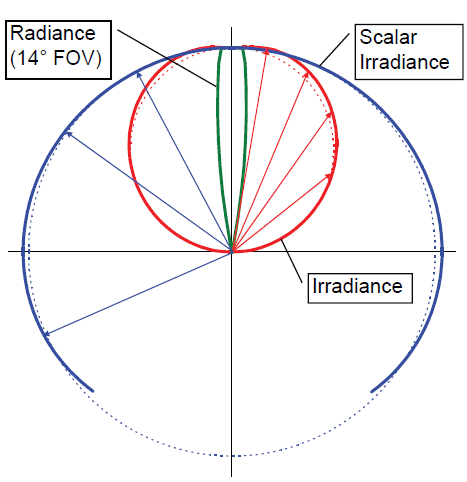
Founded in 1977Biospherical Instruments Inc. (BSI)It is an environmental monitoring instrument company that is oriented towards R&D and integrates design and production.BSI has a long history in environmental monitoring from Antarctic to Arctic, from ocean to drinking water reservoirs.
For more than 30 years, BSI's production line has focused onocean,atmosphere,Water qualityandBiological SciencesHigh quality usedOptical instrumentsThe design and production of the company is currently the leader in the field of optical instruments in the international field.BSI's products include global ultraviolet (UV) monitoring systems for land and oceans, water quality monitoring systems for drinking water sources, and optical radiators in a variety of UV and visible bands used in marine and atmospheric science.
BSI's instruments have gained wide recognition worldwide from the simplest photosynthetic effective radiation (PAR) measuring instruments to very complex radiation measurement systems for water profiles, as well as a variety of single-channel light intensity measurement sensors.Such as NASA, NOAA, EPA, WHOI, MBARI, Sea-Bird, RBR, HOBI, McLane, Teledyne, WETLabs, YSI, etc., are all loyal users of BSI.
In 1988, under the commission of the National Science Foundation (NSF), BSI began to install "Global UV monitoring network system", and BSI has been maintaining the operation of the global UV monitoring network. It was not until 2009 that this monitoring network was split into two parts: partly transferred to the U.S. Ocean and Atmospheric Administration (NOAA), and the other part is still under the responsibility of BSI..
In 2005, BSI succeeded in research and developmentMicroradiometersand obtainNASA's Business Innovation Award(SB IR).
In 2008, BSI and NASA began collaborating with the development of new, modern radiation measurement sensors to support existing and next-generation marine aqua satellite remote sensing missions.This system is calledPlanetary radiation energy optical sensor(OBodhi wipedSEnsor is forPlane ta easyRRadio AECountry of Womenhave, OSPREy), is mainly used to obtain radiation measurement data of the ocean, sky, sun and moon to meet the accuracy requirements of alternative calibration and algorithmic verification of remote sensing of ocean aqua satellites.
In 2009, BSI and the University of Chicago jointly undertake the "Natural Science Foundation"Polar Observation Network” Project, used to long-term observation of the impact of global changes on polar environment, especially UV rays.
In the field of marine optical instruments, BSI's products are industry standards.This is known from the large number of famous marine instrumentation and equipment companies purchasing optical instruments and sensors from BSI and integrating them into their own products.The following representative marine instruments and equipment companies are all loyal users of BSI:
Comesea-bird electronics, Inc.
ComeR br Ltd.
ComeFalmouth scientific, Inc.
Comeho BI labs, Inc.
ComeI robot corporation
Comeocean sensors, Inc.
ComeTeledyne RD instruments, Inc.
Comewet labs, Inc.
ComeYS II NC.
ComeMcLane research laboratories, Inc.
As early as 1978, Biospherical Corporation of the United States began to develop and produce various types of optical instruments to serve scientific research in related fields.Its first generation single-channel radiation meter, QSL-100, is still used in many laboratories around the world.LatestMultifunctional optical quantum measuring instrument AMOUR(ABut Vance'sMUL lift-skinnedOcolorUcasualRAdi o meter)Integrates Biospherical's fourth-generation PAR sensor and greatly expands its functionality, dynamic range and sensitivity.AMOUR is an economical and multi-functionalUSB portRadiation measuring instruments are suitable for scientific research or engineering applications in laboratories and fields.Its multifunctionality is reflected in the userA variety of different measuring probes are available(such as irradiance, scalar irradiance and radiance) andWorking wavesegments (such as narrow band, broad band and PAR).This instrument is compact and economical, and can be directly connected to a computer using a USB interface.Dynamic range is greater than 10 orders of magnitude.It inherits Biospherical's advanced micro-radiation measuring instrument technology and is developed according to the contract of NASA in the United States.

amourProbes and connectors
From left to right: radiant,scalarIrradiance, irradiance andSMAConnectors
Application areas
ComeLight intensity measurement of light incubator, artificial climate room, greenhouse
ComeLight intensity measurement in land and shallow water environments
ComeMeasurement of internal light intensity of algae culture flask/photobioreactor
ComeLED testing
ComeHarmful light detection
ComeSolar radiation (sunray disease)
ComeOther optical measurements
Measuring geometry

Comeirradiance(irradiance)
Measure incident radiation on a plane.This measurement geometry is suitable for most radiation applications, including lighting and solar energy research.At an incident angle of up to 85°, the ideal cosine response deviation of the AMOUR radiometer remains less than ±5%.
Comescalar irradiance(Scalar irradiance)
The Scalar response has nothing to do with the direction of the incident radiation.This measurement geometry is widely used in marine and marshmallow studies related to algae and microorganisms because the radiation affecting these tiny cells is independent of the direction of incidence.Depending on the length of the measuring rod, the Scalar radiometer can measure radiation on the spherical radian at a maximum of 3.7π (the entire spherical radian is 4π).
Comeradiance(radiant brightness)
The measurement of radiant brightness can quantify how bright an object is.It can measure the radiance of objects in the ocean, the sky or indoor areas.Typically, radiance is used to describe the radiation power per unit area and the observed fixed diagonal angle.The viewing angle range of the forward optical radiance of AMOUR is 2.5°-20°.
ComeConnect to the extension rod via SMA connector
If an SMA connector is added to the AMOUR radiometer configuration, it can be used with other extension rods, extending its application to difficult-to-reach places such as extending into algae.The extension rod can also be connected to the integral ball and other components on an optical platform.
Spectral response
By default, the measurement range of AMOUR is the spectral response range of silicon photodiodes (broadband response between 250-1100nm).If the wavelength distribution of the light source to be measured is known and the instrument has undergone a response function correction when ordered, then the luminous flux can also be measured.
There are a variety of filters to choose from when ordering the instrument, including narrowband and filters that mimic certain physiological response functions.They include:
ComeNarrowband filter(approximately 10 nm bandwidth) is usually used when the wavelength distribution of the light source is known and is limited to a smaller range (such as a laser).Or combine it with other radiometers to cover the entire target spectrum range, and it measures a part of the spectrum.
Comepar(Photosynthetic Effective Radiation) is limited to the spectral range of 400-700 nm, unlike the spectral response weighting used in other measurements, which uses quantum response weighting.The correction unit includes molecules/(cm2Yes), Einsteins/(Smart2s), quanta or photos/(cm2s), and their respective MKS variables.
ComeBlue light hazard, mainly refers to the potential photochemical damage to the retina by blue light between 400nm and 500nm wavelengths.
ComePhotometric response, it describes the perceived brightness of the human eye for light.
Comeerythema, it describes the wavelength-based sensitivity of human skin to sun exposure.
ComeOther response functions are tailor-made according to user requirements.
Technical parameters
1.amourTechnical parameters
Forward Optical Components:
Irradiance:When the zenith angle is less than 85°, Cosine error <±3%
scalarIrradiance:In case of incident angle <±135°, Directional error <±5%
Radiation:Standard viewing angle 6°, 14°; optional viewing angle range 2.5°-20°.
connect:SMA connector
Spectral response:Depends on the filter used
Detection limit:Depending on the settings, refer to the table below
Dynamic range:6×1010
Sampling frequency:4-125 Hz (raw frequency), 1/60-125 Hz (internal average)
Output interface:The standard interface is USB, you can also choose to use RS232 or RS485
Physical dimensions:
diameter:1.2 inches, approximately 3 cm
length:Depending on the different forward optical elements, 5 inches, approximately 12.7 cm (irradiance probe); 8 inches, approximately 20.3 cm (Scalar irradiance probe); 7 inches, approximately 17.8 cm (14° viewing angleThe smaller the viewing angle, the longer the length)
2.Technical parameters of micro-irradiometers (core of AMOUR)
detector:SI (13 Mom2), when ing AA (7 Mom2) or GaAsP (7 mm2)
Photocurrent-voltage conversion:1. Electrometer amplifiers with three gain levels: 2000 and 4000
ADC:24-bit bipolar, 4-125 Hz data frequency
Linear:Use a controllable light source, within the signal current range of 1×10-12To 1×10-15Measurements are made between all microradiometers, usually opposite to the reference electrometer system, error < 1%
Response time:Exponential changes with time constant less than 0.01 seconds, the time required for gain change is less than 0.1 seconds.
Electronic sensitivity:Current resolution <10-15At A, the ADC resolution is 0.5 µV.The saturation current is 160 µV.The third-level gain signal range is 1.6×1011, it is defined as a saturation signal divided by a minimum discernible signal.
Dark Compensation:Dark compensation measurements and settings are performed at calibration of each gain level.
Power supply for micro radiometers:±5 VDC, 4 mA current
Spectral range:25-1650 nm (1100-1650 nm requires the use of InGaAs detector)
Detection limit and saturation:
Detection limit | Saturation | unit | Dynamic range | |
Irradiance, 313 nm | 6.90E-06 | 3.62E+05 | μW/(cm² nm) | 5.2E+10 |
Irradiance, 490 nm | 1.16E-06 | 6.81E+04 | μW/(cm² nm) | 5.9E+10 |
Irradiance, PAR nm | 1.09E-10 | 5.7 | μE/(cm² s) | 5.2E+10 |
scalarIrradiance, 313 nm | 6.30E-02 | 4.15E+09 | μW/(cm² nm) | 6.6E+10 |
scalarIrradiance, 490 nm | 1.98E-05 | 1.04E+06 | μW/(cm² nm) | 5.2E+10 |
scalarIrradiance, PAR nm | 1.11E-09 | 58.5 | μE/(cm² s) | 5.2E+10 |
Radiant brightness, 313 nm | 4.93E-07 | 2.96E+04 | μW/(cm² nm sr) | 6.0E+10 |
Radiant brightness, 490 nm | 1.41E-07 | 8510 | μW/(cm² nm sr) | 6.0E+10 |
Radiant brightness, PAR nm | 1.31E-11 | 0.79 | μE/(cm² s sr) | 6.0E+10 |
BS iSome typical users in scientific research systems and government departments
ComeNASA(NASA)
ComeNOAA(US Ocean and Atmospheric Administration)
ComeUS EPA(US Environmental Protection Agency)
Comewoods hole oceanographic institution (WHO i, Woods Hole Institute of Oceanography)
ComeMonterey bay aquarium research institute (MBA RI, Monterey Ocean Institute)
Come
Comeworld meteorological organization
ComeYaleuniversity
Comeuniversityof California, Berkeley
Comeuniversity of California, Davis
Comeuniversity of California, Irvine
ComeUniversity of California, Riverside
ComeUniversity of California, Santa Barbara
Comeuniversity of California, San Diego
ComeStanforduniversity
Comeuniversityof Chicago
ComeMassachusetts institute of technology
ComeArizonastate university
ComeAustralian Antarctic division
ComeAustralian institute of Marine sciences
ComeBedford institute of oceanography
ComeBigelow laboratory for ocean science
ComeBostonuniversityMarine program
Comebowling greenstate university
ComeBritish Antarctic survey
Comecenter for coastal physical oceanography
ComeVirginia’Double center for innovative technology
ComeFrench governmental research agency
Comecent red’ocean OL o Goethe Marseille, Lumi NY of campus
ComeColorado state university
Comeuniversity of Copenhagen
ComeCalifornia state university, long beach
ComeCalifornia state university, San Marcos
ComeDanish meteorological institute
Comenational environmental research institute,
ComeDukeuniversity
ComeFloridagulf coast university
ComeFinnish institute of Marine research
ComeFloridastate university
Comeuniversityof Georgia
ComeGoteborguniversity
ComeHawaii institute of Marine biology, so EST
Comehong Konguniversityof science and technology
ComePolishacademyof sciences
Comeuniversityof Maine
Comeuniversityof Maryland
Comemax-Planck-INS TE TUT Madam Marine MI Cool Rob IO log IE
ComeUN VIE RSI TYMichigan
Comeuniversity of Minnesota
Comeuniversity of Mississippi
ComeMoss landing Marine labs
ComeMichigan state university
ComeMiami university of Ohio
Comenational university of Singapore
ComeSan Diego state university
Comesouthern Illinois university
Comeuniversity of Southampton
ComeTexas A & M university
Comeuniversity of south Carolina
Comeuniversity of north Carolina
Comeuniversity of Ottawa
Comeuniversity of western Australia
Comeuniversity of south Florida
Come
Comethe university of Toledo
Comeuniversityof Washington
ComeWaynestate university
Come<Judgment of sunbathing</